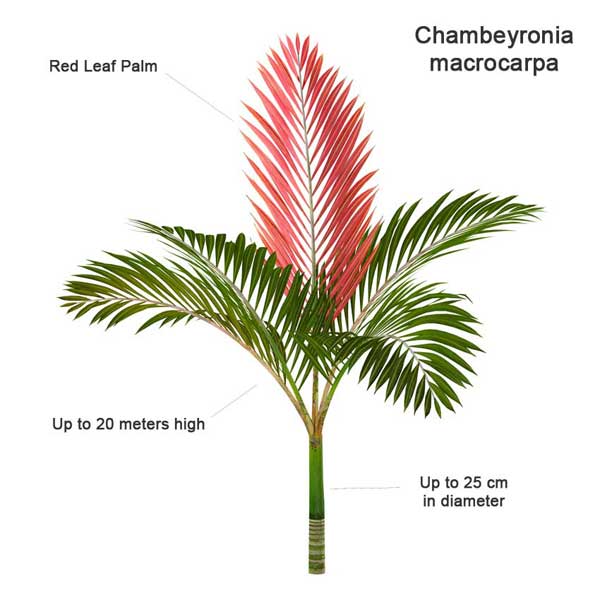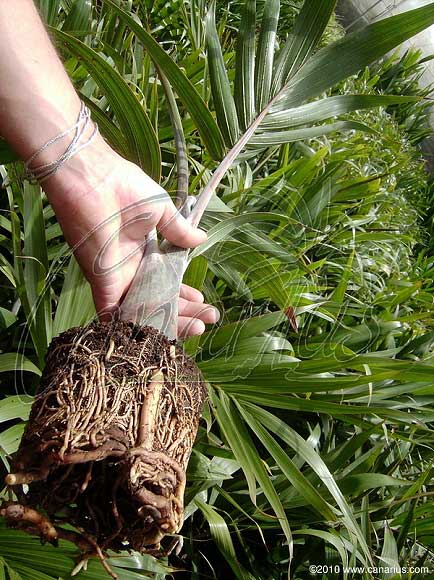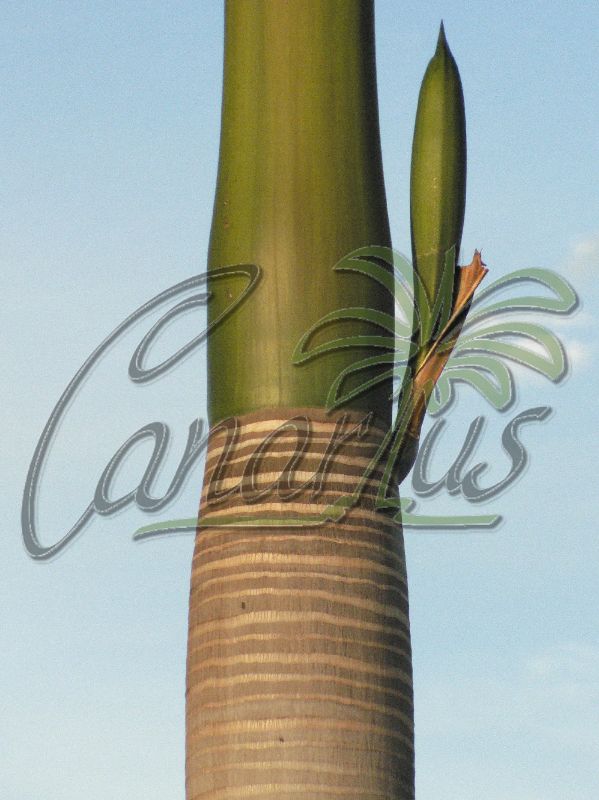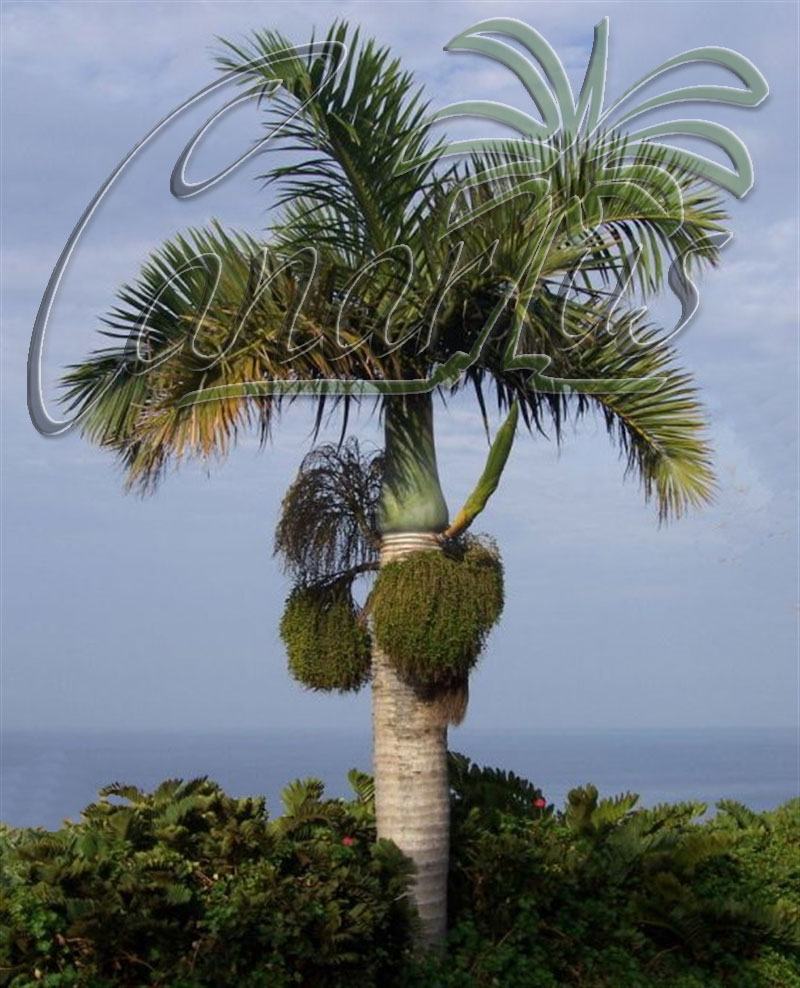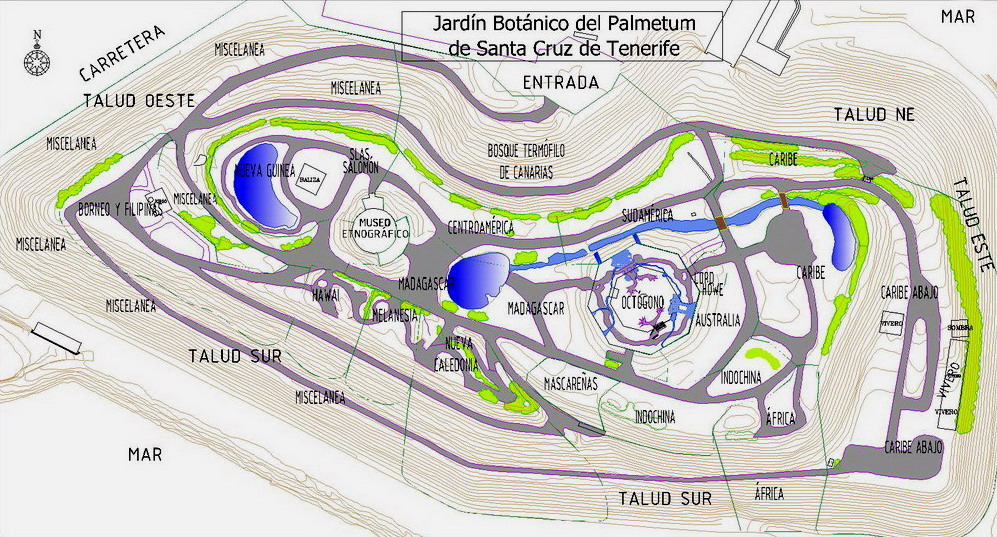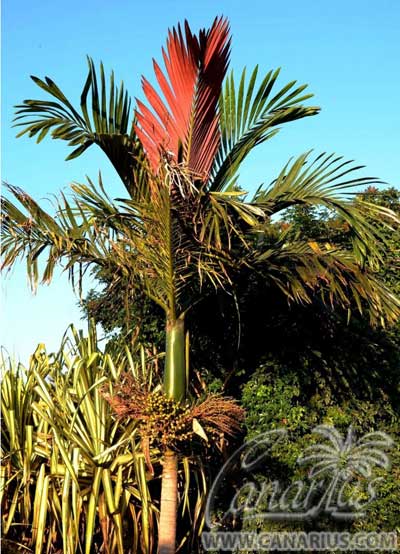 If you’re looking for a one-of-a-kind rare species then you want the Flame Thrower Palm. From Canarius we would like to introduce this beautiful palm. This is one of the most beautiful palms in the world. It is native to the forests of New Caledonia, the luscious island of New Caledonia is east of Australia and north of New Zealand, where it occurs from sea level to over 1.000 m. Formally recognized, there are only two species of Chambeyronia, a genus of striking beauty for New Caledonia. That kind includes Chambeyronia macrocarpa, which family is Arecaceae. Their common names are: the Flame Thrower Palm is also known as Red Feather Palm, Red Leaf Palm, Blushing Palm, Watermelon Palm.This species is from wet mountainous areas below the height of 800 meters. The name Chambeyronia honors Charles-Marie Chambeyron who lived from 1827 – 1891. He was part of the French Navy and assisted in the mapping of the coast of New Caledonia.
If you’re looking for a one-of-a-kind rare species then you want the Flame Thrower Palm. From Canarius we would like to introduce this beautiful palm. This is one of the most beautiful palms in the world. It is native to the forests of New Caledonia, the luscious island of New Caledonia is east of Australia and north of New Zealand, where it occurs from sea level to over 1.000 m. Formally recognized, there are only two species of Chambeyronia, a genus of striking beauty for New Caledonia. That kind includes Chambeyronia macrocarpa, which family is Arecaceae. Their common names are: the Flame Thrower Palm is also known as Red Feather Palm, Red Leaf Palm, Blushing Palm, Watermelon Palm.This species is from wet mountainous areas below the height of 800 meters. The name Chambeyronia honors Charles-Marie Chambeyron who lived from 1827 – 1891. He was part of the French Navy and assisted in the mapping of the coast of New Caledonia.
Features
Chambeyronia macrocarpa grows to 15 m tall and is found in the understory of rainforest. The solitary stem has rings at regular intervals along it, which are the scars left where leaves were attached that have now fallen. Large feather palm to about 20m, with a spectacular, bright red new leaf, which stays red for up to 10 days. Seeds are red and very large, thus the species name of “macrocarpa”. Although most Chambeyronia only throw two to three new leaves a year, each one is special. This is because they emerge with a gorgeous red color. This red varies from a deep, burgundy wine purple through all intermediate colors to an intense pink.
They can resist temperatures down to 25 degrees. These exotic and rare cold hardy plants thrive in a well-drained, moist climate with full sun to light shade. Don´t forget! It requires consistently moist soil; do not let dry out between waterings, Water regularly; do not overwater. Easy to grow. Do you want to make a home feel like home by giving you the feel of nature? .You can choose inside or out? The Flame Thrower Palm is a wonderful specimen that you must have in whether it is in your home, office, or garden!
















